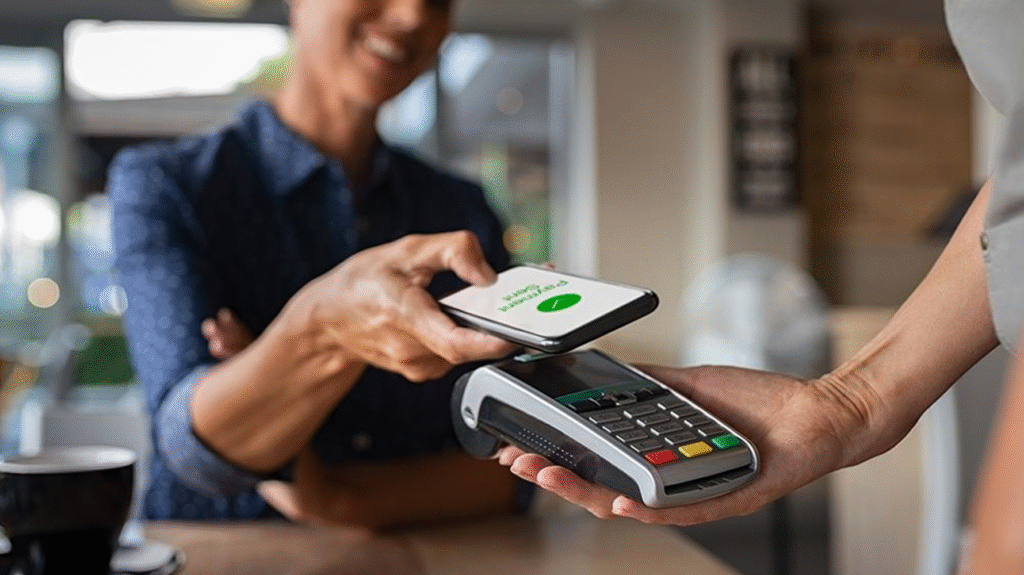
Contactless Payment Cards and Their Impact on Retail Shopping Habits
Contactless payment cards offer a seamless combination of speed, security, and convenience. Customers can pay with just a tap. This technology saves time and money for both consumers and retailers. As this technology becomes more widespread, how will consumer spending habits change? Let’s take a closer look.
Faster Transactions and Shorter Queues
Speed at checkout is a major driver of adoption. With contactless payment cards, customers tap and complete payment within seconds. This is much faster than inserting chip cards or handling cash. Shorter queues reduce stress for shoppers and create smoother store traffic flow. Retailers also serve more customers in less time, which directly increases revenue. Because checkout is quick and efficient, shoppers are more likely to return. That sense of convenience becomes a competitive advantage in crowded retail markets.

Better Security and Consumer Confidence
Security is critical in every payment method. Contactless payment card uses tokenisation, encryption, and short-range communication to protect sensitive data. These cards are much harder to clone compared to magnetic stripe cards. Fraud prevention tools include daily limits, PIN requirements after several taps, and real-time alerts. As a result, customers feel safer when using them for everyday purchases. Increased confidence means they are more willing to adopt and use the technology often. For retailers, stronger security also reduces disputes and chargebacks.
Changing Customer Behaviour in Stores
Contactless payments shape how shoppers behave. Customers who get used to tapping prefer it over slower payment methods. They often make smaller, more frequent purchases because checkout feels effortless. Quick payments encourage impulse buys at checkout counters. Customers also spend more time browsing because they know payment will be smooth. For retailers, this shift means increased sales volume and a more enjoyable shopping experience. Retailers that fail to adapt risk losing customers to competitors who offer faster checkout systems.

Benefits for Retail Operations
Retailers gain significant operational advantages. Staff spend less time handling and counting cash, which reduces errors and theft. Shrinkage also decreases because less physical money is involved. Faster checkouts free employees to focus on customer service or stocking shelves. Stores become more productive without increasing payroll expenses.
Additionally, customers often buy more items when checkout is quick. That increases basket size and strengthens overall profitability. Operational efficiency and higher sales create long-term growth opportunities.
Integration with Mobile Wallets and Wearables
Contactless payment cards work seamlessly with mobile wallets and wearable devices. Customers can link cards to apps on smartphones, smartwatches, or fitness bands. The same terminal accepts both cards and devices, making checkout flexible. This integration promotes adoption by offering users multiple payment options within a single system. Retailers only need to maintain a single infrastructure, reducing technology costs. Mobile payments also encourage loyalty program connections, where rewards are stored digitally. This creates a stronger link between the store and the customer.

The Role of NFC Card and Smart Card Technology
Technology drives reliability. An NFC card communicates with the terminal using secure radio waves. A smart card stores encrypted information and enables authentication. Together, they power contactless payment systems with safety and efficiency. These cards are durable and designed to last, making them a substantial investment for consumers. Retailers who adopt terminals compatible with both NFC cards and smart cards serve a wider audience. Compatibility also prepares businesses for future innovations in secure payment solutions.
Global Growth and Future Trends
Worldwide, the adoption of contactless methods continues to expand. In Europe, tap-to-pay already accounts for the majority of daily transactions. In North America, adoption is climbing quickly as banks issue new cards. Younger generations demand faster, digital-first experiences. Older shoppers, once hesitant, now embrace the ease of use. Future innovations may include higher transaction limits, biometric verification, and advanced fraud detection and prevention. Retailers should expect demand to rise steadily. By upgrading systems now, they avoid losing relevance later. Global momentum makes this technology an essential part of modern retail.

Contactless Payment Cards and Retail Shopping Habits
Contactless Payment Cards have permanently changed retail shopping habits. They offer faster checkouts, enhanced data security, and increased convenience for every customer. Retailers benefit from smoother operations, higher sales, and improved customer loyalty.


